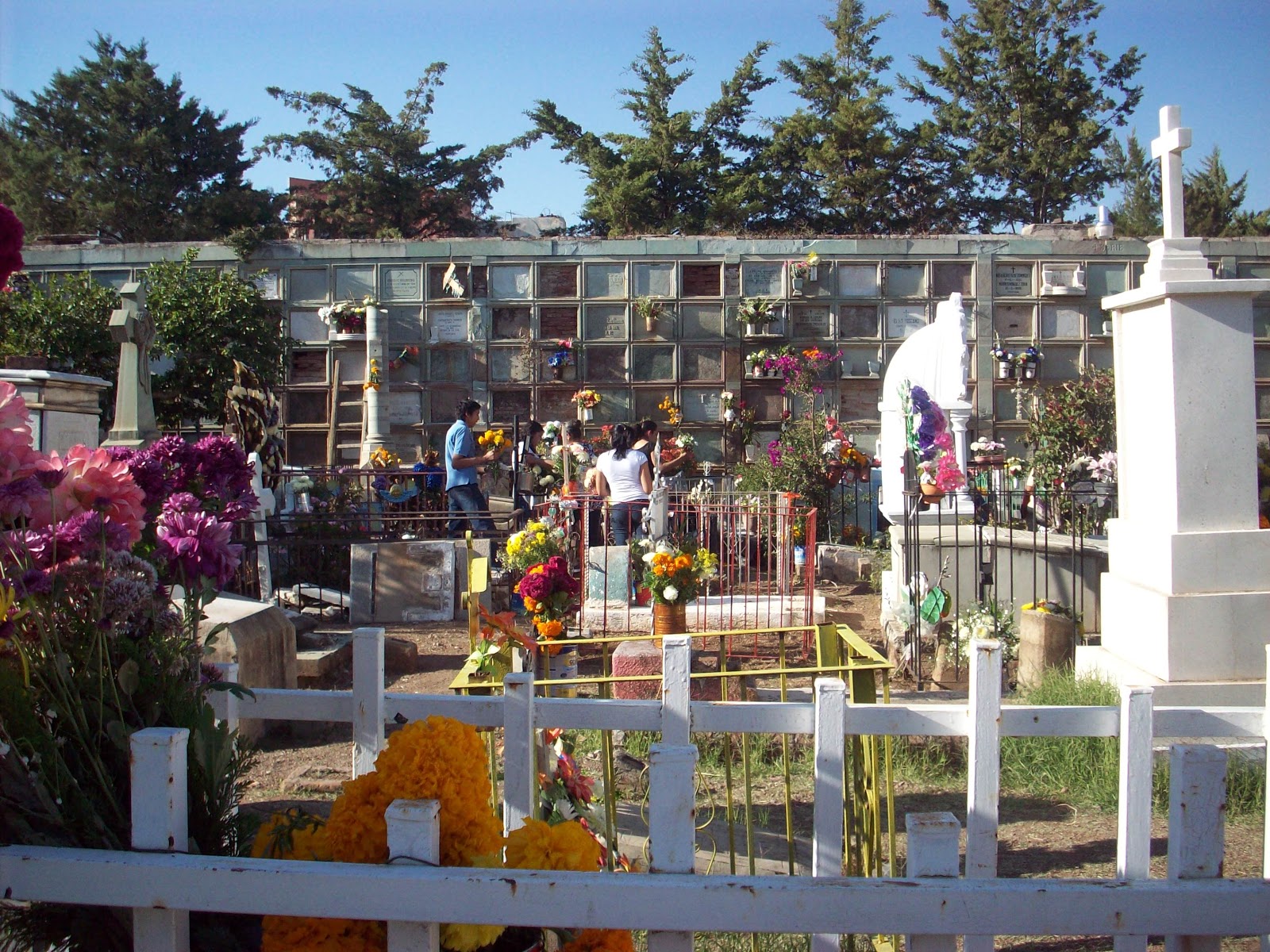Last year, I was in
Guanajuato for one of México’s most famous Fall traditions, the Day of the
Dead. It is certainly an interesting holiday. The Day of the Dead actually
lasts two days. The first day, November 1, is el Día de los Angelitos, which means that it is the day in which
tribute is given to those who died as children or infants. The larger
celebrations begin on the night of November 1, and continue into November 2,
which is the day in which most people celebrate, and in which classes are
cancelled (wooo! Holiday!).
I did not go to the
night celebrations, but I had friends who went to the Panteón (Cemetery) the night of the 1st. They said that
there were huge crowds of people there decorating the graves/tombs, carrying
candles, and that there were some mariachis playing over the deceased person’s
grave. My host mother told me that it is common for more affluent families to
hire a mariachi that plays the deceased person’s favorite song over his or her
burial site.
Although I did not go
to the nighttime celebrations, it was impossible for me to miss the daytime
celebration! Once I got into the Centro
(the town-centerish area), there were indications of the holiday everywhere: Pan de los Muertos (bread of the dead)
in all of the bakery windows; flowers being sold in every street corner; altars
in several public buildings, built for important deceased persons (these
normally have the picture of the deceased, and then are decorated with colored
cloth, sugar skulls, flowers, and items that show what the deceased person
liked or enjoyed doing, like several apples if his/her favorite food was
apples); artistic creations in the streets depicting images of the dead in the Mexican point of view, all made of natural objects
(rice, flower petals, painted stones, etc.). I have provided some pictures as examples
under this paragraph:
Some of my friends and
I went to see these amazing creations, and then we went to the Pantéon to see the graves. It was
AMAZING. I observed all of the traditional customs: the family members wash the
deceased member’s grave or tomb (all over the place there are people carrying
buckets of water). Then they bring flowers such as the cempasúchitl (a popular flower with the Aztecs). I will note here
that the Día de los Muertos is a
tradition formed by the amalgamation of Spanish and indigenous traditions),
which are marigolds, and other types. They use these to decorate the graves,
since it is believed that the appealing color and smell is welcoming to the
dead souls. They also decorate the graves with candles and with things that
represent what the person enjoyed when he or she was alive. For example, I saw
a child’s grave that had toy racecars and candy on it, meaning that he enjoyed
these things. Family members or groups often congregated around the graves.
There was also a Catholic mass right there in the Panteón. I did not see any mariachi there, but I was told that this
usually occurs at night, and it is more calm during the day. I have some
pictures from the Panteón below:
One important thing
that I learned through the Día de los
Muertos is that Mexicans do not fear death – they honor it, and see it as a
natural process. While Americans tend to shy away from topics about death,
Mexicans embrace it with the knowledge that we are all going to die someday.
The colorful flowers and relics left on a person’s tomb show explicitly that
they are CELEBRATING, NOT MOURNING, the death of a loved one. They celebrate
the life that the person lived, and the life that they now have in the
afterlife. I think that this tradition and belief is very cool, and I really
enjoyed my experience!






No comments:
Post a Comment